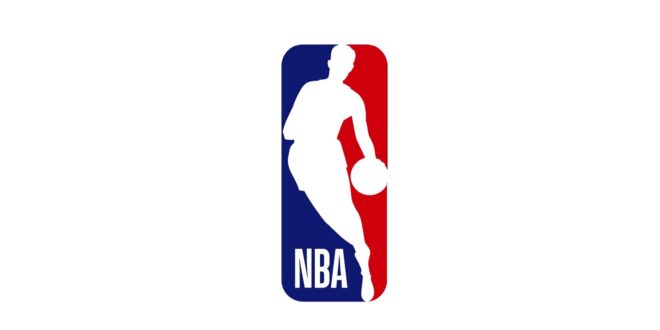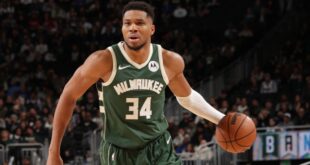The Indiana Pacers experienced a decline in offensive performance throughout the regular season, ranking alongside the New Orleans Pelicans and Philadelphia 76ers as teams that suffered the most significant decreases in points scored per 100 possessions between the 2023-24 and 2024-25 seasons.
However, the Pacers’ offense has revitalized in the playoffs, averaging 5.0 more points per 100 possessions compared to what their opponents allowed during the regular season, propelling them into the NBA Finals for the first time in 25 years.
Their effective field goal percentage stands at 57.6%, marking the second-highest for any Finals team up to the conference finals in the history of the playoffs. In this postseason, the Pacers have positioned themselves fourth in field goal percentage in the paint (58.7%), first in mid-range shooting (48.7%), and first in three-point shooting (40.1%).
Conversely, the Oklahoma City Thunder’s defense has outperformed the Pacers’ offense, limiting opposing teams to an impressive 12.8 fewer points per 100 possessions compared to their regular-season averages. The Thunder ranks second in the playoffs for effective field goal percentage against (49.9%) and leads by a significant margin in opponent turnover rate (17.7 per 100 possessions).
The contest between the Pacers’ offense and the Thunder’s defense is undoubtedly the focal point of this Finals series. Below are insights, statistics, and analysis regarding the Indiana offense and Oklahoma City’s defensive strategies.
The foundation of the Pacers’ offense is built on transition play. They capitalize on turnovers, rebounds, and even successful shots by pushing the ball up the court. Their transition plays account for 18.1% of their possessions—ranking third in the playoffs—and they lead in points per possession in transition (1.32), according to Synergy statistics.
While the transition game involves multiple players, Tyrese Haliburton and Pascal Siakam form an ideal duo for quick scoring early in the shot clock. Siakam consistently outpaced the Knicks in the Eastern Conference Finals, with Haliburton frequently setting him up in transition:
However, running on the Thunder will prove challenging. Oklahoma City’s opponents only transition on 13.6% of their possessions, the lowest in the playoffs.
Oklahoma City boasts multiple defenders capable of guarding various opponents, which alleviates matchup concerns. They can effectively swarm the ball and recover in response to player movement:
In their two regular-season encounters, the Thunder restricted the Pacers to just 34 total transition points, averaging 17 per game, significantly below Indiana’s regular-season mean of 26.2.
The Thunder not only led the league in opponent turnover rate during the regular season but also ranked fifth in live-ball turnovers (60.7%) — accounting for steals. They recorded 10.2 steals per 100 possessions, the highest in the past 12 years.
In the playoffs, their average has risen to 10.6 steals per 100 possessions, including 11.1 per 100 in the Western Conference Finals. All 12 Thunder players who logged at least 50 playoff minutes averaged over one steal per 36 minutes, while only six of the 12 Pacers matched that figure.
The Thunder’s ability to generate turnovers hinges on their ball pressure. This isn’t confined to a single defender; when an opponent drives, additional defenders with long reaches and quick hands are ready to assist in stealing the ball:
Despite the dynamism of their offense, the Pacers excel at protecting the basketball, averaging just 2.27 dribbles per touch, the second-best rate in the playoffs, which aligns with the Thunder’s tendency to force turnovers.
Though the Pacers lost both regular-season matchups, they recorded the second-lowest turnover rate (11.7 per 100 possessions) against the Thunder.
The turnover rate will undoubtedly be a crucial statistic to monitor during the Finals.
Even if opponents halt the Pacers in transition, their pace doesn’t wane. The quick ball movement and player engagement render them the most challenging team to defend in the league, despite facing off against other teams with superior individual talent.
The Pacers target weaker defenders (they set a combined 47 ball screens per game on Jalen Brunson and Karl-Anthony Towns) not merely for isolation plays, but to fuel their overall ball and player movement.
Throughout both the regular season and playoffs, the Pacers have consistently ranked near the top in terms of ball and player movement:
– **Pacers’ Ball and Player Movement, 2024-25**
– Passes/24 = Passes per 24 minutes of possession
– Miles/24 = Total distance covered per 24 minutes of possession
Interestingly, there was no correlation between overall ball movement and offensive efficiency against the Thunder’s elite defense during the regular season. However, the Pacers’ propensity to share the basketball could provide an advantage against a tenacious defense.
By avoiding turnovers, the Pacers can create open shots on the weak side. The Thunder rank third in the playoffs with a 3-point attempt rate of 44%, and 32% of these attempts (second-highest) have originated from the corners:
The Pacers have thrived from the corners, hitting 46.9% of their corner threes—far surpassing all other playoff teams—with Aaron Nesmith leading the way with 17 corner threes out of 35 attempts.
If they can navigate past the Thunder’s defensive onslaught, the Pacers could secure favorable looks from the corners:
While the Pacers rank just 11th in 3-point attempt rate (39.1%), they may need to elevate this number and enhance their offensive rebounding percentage (23.8%, 16th) since the best opportunities from beyond the arc often arise from second-chance efforts, and Oklahoma City stands 12th in defensive rebounding percentage (67.3%).
Regardless of rebounding outcomes, this series presents the most significant challenge yet for both the Pacers’ offense and the Thunder’s defense.
* * *
John Schuhmann serves as a senior statistics analyst for NBA.com. For inquiries, you can reach him here, view his archive here, and follow him on X.
The opinions expressed on this page do not necessarily represent those of the NBA, its teams, or Warner Bros. Discovery.
 NBA News NBA News, Match Reports and Updates
NBA News NBA News, Match Reports and Updates



